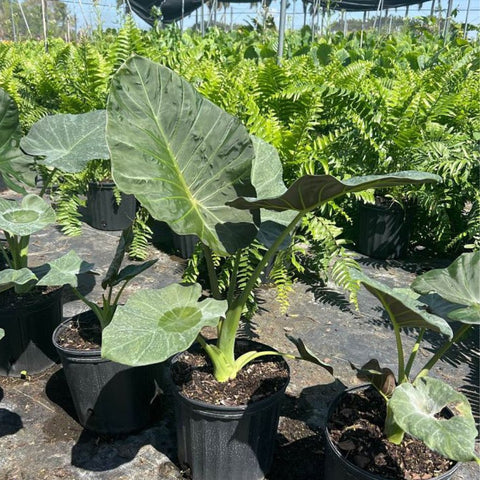Introduction
Timing is everything in gardening, and this concept goes far beyond merely choosing a sunny day to plant seeds. The success of your garden depends significantly on understanding and adhering to a planting calendar that is customized to your region. At Plantology, we acknowledge the critical importance of regional differences, from climate to soil conditions, which is why a planting calendar tailored specifically by zip code is invaluable for both novice and experienced gardeners.
This comprehensive guide will delve into the essentials of planting calendars and why they vary from region to region. We'll explore the science backing these calendars and demonstrate how they can be a game-changer for optimizing plant growth and yield. Whether you're planting a single tree or cultivating a diverse garden, Plantology is here to support your gardening journey with expertly curated products and advice.

Understanding Planting Calendars
Definition and Purpose of a Planting Calendar
A planting calendar is an invaluable tool that helps gardeners determine the ideal times to start seeds, transplant starts, and harvest crops in your particular area. By aligning your gardening activities with specific seasonal milestones, you can ensure that your plants are setting their roots in the ideal conditions to thrive.
The purpose of these calendars is to eliminate guesswork from gardening. With a structured schedule, you can plan ahead, prepare your soil properly, and ensure that each plant has a fighting chance at reaching its full potential. Additionally, a planting calendar can help minimize the risk of frost damage and other environmental factors that can jeopardize your gardening efforts.
How Planting Calendars Differ by Region
The disparities in planting calendars across different regions stem largely from variations in climate, temperature, and daylight hours. A seed sown in Florida will not contend with the same growing conditions as one planted in New York. Hence, it’s vital to use a planting calendar that reflects the specific patterns of your locale.
These calendars account for the average first and last frost dates, daily temperatures, and seasonal rainfall patterns. They are designed to help you make the most informed decisions, from the right time to start seeds indoors to the best moment for transplanting shoots outdoors.
Importance of Localized Planting Calendars for Optimal Growth
Localized planting calendars act as your personal garden coach. When you plant at the optimal time for your specific area, you can expect better germination rates, healthier plants, and—most importantly—a more bountiful harvest. By following a calendar adjusted to your zip code, you’re effectively syncing your gardening efforts with the natural rhythms and cycles of your environment.
At Plantology, we encourage gardeners to embrace localized planting calendars to make every gardening endeavor a success. Visit Plantology to explore our range of products that support your specific regional needs.
The Science Behind Planting Calendars
Climate Zones and Their Impact
Understanding plant hardiness zones is fundamental to grasping the science behind planting calendars. These zones, defined by the United States Department of Agriculture (USDA), are based on the average minimum winter temperature in a given region. They range from Zone 1, the coldest, to Zone 13, the warmest.
Each zone influences which plants are best suited to thrive there. The zones provide a baseline from which you can discern the environmental factors impacting plant growth, allowing you to select the right varieties for your garden. When you’re planting in alignment with the appropriate climate zone, your plants are more likely to survive and flourish.
Frost Dates and Growth Cycles
Frost dates are another significant component of planting calendars. The last frost date indicates the average day in spring when it's safe to start planting most outdoor crops without the risk of frost damage. Conversely, the first frost date in fall marks the time to harvest or protect plants before the occurrence of frost.
These dates are essential for timing the planting of a wide variety of plants—from delicate seedlings to robust shrubs. They guide you in making crucial decisions, such as when to start seeds indoors or to harden off plants before outdoor planting. Accurately predicting these dates ensures that plants complete their growth cycles without disruption.
Day Length and Growing Conditions
Beyond temperature and frost, another critical aspect of planting calendars is daylight length. The amount of daylight impacts photosynthesis and plant metabolism. During different seasons, the changing length of daylight can either speed up or slow down the growth of plants, affecting when and how you should manage your plantings.
Discover our Alexander Palm, a wonderful addition for gardens in sunnier climates that crave extended daylight hours.
Creating a Localized Planting Calendar by Zip Code
Research and Resources Required
Developing a planting calendar for your zip code requires access to local environmental data and an understanding of regional agricultural practices. By utilizing resources such as local cooperative extensions and weather services, you can gather detailed information on frost dates, average temperatures, and rainfall patterns in your area.

To make this process easier, Plantology provides planting resources tailored to various zip codes, enabling you to make informed decisions for your specific garden needs.
Tools and Technology in Modern Calendars
The advent of digital tools and technology has revolutionized the way planting calendars are created and used. Online platforms offer data-driven insights and customizable calendars that factor in unique zip codes, making it more straightforward than ever to access targeted guidance for your garden.
At Plantology, we harness these technological advances to offer you cutting-edge resources for crafting your personalized planting calendar.
Steps to Customize Your Calendar
Creating your localized planting calendar involves a series of thoughtful steps:
- Identify Your Zone: Use the USDA Plant Hardiness Zone Map to identify your climate zone.
- Consult Frost Dates: Find and bookmark the average last and first frost dates for your zip code.
- Plan Seed Starting: Determine when to start seeds indoors using these dates as a guide.
- Chart Transplant Times: Schedule your transplants around the frost probabilities and growing conditions in your area.
- Adapt to Conditions: Regularly update your plan based on ongoing weather patterns and plant performance.
By organizing these elements into a coherent schedule, you'll cultivate a garden that is not only beautiful but also thriving.

Choosing the Right Plants for Your Zip Code
Analyzing Local Soil and Environment
Your local soil type and environmental conditions will significantly influence which plants will do well in your garden. Different plants have different pH requirements and nutrient needs, so testing your soil and understanding the environmental constraints is crucial.
Equipped with this knowledge, you can choose plants that will not only survive but also thrive in your specific conditions. Explore the exquisite Blue Agave for a hardy addition that complements well-drained soils and warm climates.
Matching Plants to Your Zone
Each plant has its preferred hardiness zone. To ensure success, select plants known to prosper in your designated area, which are well-adapted to the climate and seasonal changes you experience throughout the year.
Plantology offers a wide range of plants, from tropical palms to native perennials, so you can find the perfect fit for your zone. Discover our Adonidia Palm Double for a tropical flair in zone-appropriate regions.
Recommended Plant Selections
Here are some ideal selections by general regions:
- Northern Climates: Consider hardy evergreens and cold-resistant perennials.
- Southern Climates: Decorate with palmettos and vibrant flowering annuals.
- Coastal Areas: Opt for salt-tolerant shrubs and dune grasses.
-
Desert Regions: Look for drought-resistant succulents and cacti such as the Caribbean Agave.

Seasonal Planting Guide
Spring Planting Tips
Spring is the gardener’s busiest season; it’s the ideal time to sow seeds and transplant young plants into the ground. As the soil warms, the risk of frost diminishes, and longer daylight hours stimulate growth.
Start by enriching your soil with compost and removing any weeds or debris. Then, plant cool-season crops such as lettuce and broccoli directly into the ground in early spring. As temperatures rise, move on to warm-season crops like tomatoes and peppers.
Summer Care and Maintenance
Summer is dominated by watering and maintenance. The challenge is to keep your garden hydrated without overwatering. Mulching can help retain soil moisture and control weeds.
Ensure proper plant care by deadheading flowers and pruning shrubs regularly. Use this season to focus on pest control and provide support for climbing plants, like trellises for vines.
Fall Planting and Preparation
Fall is an excellent time for planting perennials, trees, and shrubs, allowing them to establish roots before winter. Use this time to plant garlic, onions, and other root crops for overwintering.
Clear fallen leaves and apply a layer of mulch to protect young plants through winter. Harvest remaining summer vegetables, and sow cover crops to replenish soil nutrients.

Winter Strategies and Adjustments
Winter is the time for rest and preparation for the upcoming planting season. Utilize this period to plan your garden layout, order seeds, and perform maintenance on your gardening tools.
Check on stored bulbs and tubers, ensuring they remain at the appropriate moisture levels. If you live in mild climates, you can continue planting hardy vegetables directly into the soil.
Conclusion
Understanding and utilizing a planting calendar tailored to your zip code unlocks the full potential of your garden. A well-thought-out calendar ensures you're planting at the correct times for optimal growth, resulting in a flourishing garden filled with beautiful and healthy plants.
At Plantology, we are committed to helping you succeed in your gardening endeavors by providing comprehensive resources and a curated selection of high-quality plants. Explore our diverse product offerings, like the Agapanthus Lily of the Nile Blue, perfectly adaptable for various regional climates.
Start your gardening journey with confidence by leveraging the power of a personalized planting calendar. Visit Plantology today to find the perfect plants for your zip code and take advantage of our expert advice and quality products to enhance your garden's beauty and bounty.

Deep dive into Real-World Examples
Case Study: Urban Gardening in New York City
In the heart of bustling New York City, urban gardening has taken root in community gardens and small rooftop spaces alike. Despite the city's dense concrete landscape, localized planting calendars have helped urban gardeners maximize their limited space. By aligning with the USDA hardiness zone 7b, NYC gardeners have embraced vertical gardening techniques and container planting.
The typical planting calendar for this region suggests starting hardy vegetables indoors in late February, with broccoli and cabbage seedlings ready for transplant by early April. By May, the warmer climate welcomes tomatoes, peppers, and basil. Challenges include soil contamination and limited sunlight, but solutions like raised beds and reflective surfaces have become invaluable.
Community initiatives have promoted rooftop green spaces, reducing heat and providing fresh produce. Such localized efforts illustrate how planting calendars empower citizens to reclaim urban environments, transforming them into productive green spaces despite spatial constraints.
Rural Regeneration in the Midwest
In the expansive landscapes of the Midwest, planting calendars provide a backbone for agricultural endeavors. With rich soil and ample space, regions like Iowa and Illinois operate within USDA zones 5a to 6b, characterized by cold winters and hot summers. Here, a planting calendar is vital for cash crops like corn and soybeans.
A typical planting calendar pushes for the sowing of cool-weather crops, such as spinach and peas, immediately after the last frost in April. Farmers aim to plant corn by mid-May, chasing optimal heat units through summer for maximum yield by harvest time in late September. Calendars also guide farmers on crop rotation and cover cropping to replenish soil health post-harvest.

The advent of precision agriculture tools has fine-tuned planting schedules, integrating real-time soil and weather data to guide planting decisions that optimize growth and resource use. This synergy of tradition and technology exemplifies how planting calendars drive sustainable rural agriculture.
Desert Gardening in Arizona
In Arizona's arid climate, gardening demands an entirely different approach. Situated within USDA zones 9a to 10b, the desert climate poses unique challenges like extreme heat and limited water. Nonetheless, localized planting calendars offer valuable guidance tailored to these conditions.
Gardeners are encouraged to plant drought-resistant species, such as cacti, succulents, and native wildflowers, which thrive in the sun-baked environment. The best time to plant is during the cooler months—spring and fall—when the risk of scorching temperatures is low. For vegetables, starting seeds indoors during winter ensures they are ready for outdoor planting by February.
Water conservation strategies are critical here; drip irrigation systems paired with a targeted planting calendar ensure efficient water usage and reduce evaporation. Adding mulch further insulates soil moisture, proving that thoughtful planning and planting calendars allow vibrant gardens to flourish even in the harshest climates.
Integrating Companion Planting with Planting Calendars
The Benefits of Companion Planting
Companion planting—the art of growing complementary plant species together—enhances garden biodiversity and resilience. This method leverages symbiotic plant relationships to repel pests, increase pollination, and improve soil health. Integrating companion planting within a planting calendar augments these benefits by timing plant interactions synergistically.

For example, pairing marigolds with tomatoes is a classic strategy; marigolds deter nematodes, protecting tomato roots. Incorporating such pairings into your planting schedule ensures that beneficial interactions occur throughout the growing season.
Designing Companion Planting Schedules
Creating a companion planting schedule begins with selecting plant pairs known to benefit each other. Tailor your planting calendar to align their growth cycles, ensuring they provide mutual support during critical phases. Here’s a step-by-step approach:
- Identify Compatible Plant Pairs: Research plants with known mutually beneficial relationships, such as carrots and onions, which confuse pests.
- Align Growth Stages: Schedule seeding and transplanting so their life cycles intersect optimally. For example, plant basil when tomatoes mature to repel aphids.
- Adapt Placements: Reserve adjacent spaces for companion pairs in your garden plan, allowing easy access and maintenance.
- Monitor Interactions: Regularly observe plant growth and health, adjusting schedules to resolve competition for resources or space.
A carefully crafted schedule enriches garden biodiversity while promoting eco-friendly practices. The result? A healthier, more productive garden that thrives through natural synergy.
Gardening with Native Plants
Advantages of Native Plant Selection
Native plants are adapted to local climate and soil conditions, making them an excellent choice for sustainable gardening. They require fewer resources and maintenance, helping to reestablish ecosystems and support local biodiversity. Planting calendars tailored to native species maximize these advantages.

Native plant gardens reduce the need for fertilizers and pesticides, promoting an organic growth cycle. They also play a critical role in supporting local wildlife, providing habitat and food sources for pollinators and beneficial insects.
Incorporating Native Plants into Your Calendar
When designing your planting calendar, consider integrating native species to optimize your garden's ecological impact:
- Research Local Flora: Identify native plant species suited to your soil and climate conditions. Consider visiting botanical gardens or extensions for guidance.
- Plan for Seasonal Variety: Stagger planting times to ensure continuous blooms and healthy ecosystems. Introduce flowering plants that sustain pollinators year-round.
- Mix with Non-Native Varieties: While prioritizing native plants, incorporate non-invasive exotics for aesthetic and functional diversity.
- Encourage Natural Spread: Let native plants self-seed and spread naturally, establishing a thriving, dynamic garden ecosystem.
Incorporating native plants into your planting routines fosters a resilient landscape that harmonizes with its surroundings, supporting sustainable gardening practices regardless of your location.
Maximizing Harvest and Beyond
Cultivating for Maximum Yield
Gardening involves more than planting; it’s about nurturing each stage for a bountiful harvest. A planting calendar guides you through not only the planting dates but also the care and maintenance essential for productive output. Season-long strategies ensure robust growth and prepare you for eventual harvest:

- Implement Crop Rotation: Prevent nutrient depletion by rotating crops annually, guided by your planting calendar.
- Monitor Soil Health: Regular soil tests, included in your calendar, inform amendments and nutrient management.
- Pest and Disease Vigilance: Schedule regular inspections and interventions to protect plant health during critical growth phases.
- Harvest Timing: Plan harvests when crops reach peak ripeness for flavor and nutritional value.
By harmonizing planting calendars with comprehensive care, you secure an abundant harvest that can be stored or shared with community-supported agriculture and local food banks, expanding your garden’s reach.
Preservation and Sharing of Your Bounty
Once harvested, the journey continues as you explore preservation methods—canning, drying, and freezing—prolonging enjoyment of your garden's yield. Sharing excess produce unites communities, reinforcing the social fabric and food security. Embrace these steps to maximize your garden's impact:
- Explore Preservation Techniques: Consult guides on canning, pickling, and other methods, ensuring future meal enjoyment.
- Engage in Seed Saving: Save seeds from heirloom varieties to continue unique lineage and share with fellow gardeners.
- Organize Community Exchanges: Foster connections through produce swaps, invigorating local gardening culture and diversity.
- Donate to Food Banks: Contribute excess produce, addressing food accessibility and promoting healthy diets.

Your garden's contributions resonate beyond its boundaries, nourishing communities and reinforcing human connections. As a gardener, you wield the power to effect positive environmental and social change, all beginning with a carefully crafted calendar.
Conclusion: The Ever-Growing Journey
Gardening, rooted in patience and observation, is a poignant reminder of nature's rhythms and our connection to the earth. By leveraging a planting calendar tailored to your zip code, you’re participating in an age-old tradition, innovating with modern data insights and techniques.
The journey doesn't end with the harvest; it's cyclical, enriched by every seed sown and every lesson learned each year. As you adapt, conserve, and collaborate, let Plantology be your partner in every step, providing resources, expertise, and a community of like-minded enthusiasts. Unlock your garden's full potential with our curated collection, and witness the transformation of both your space and your understanding of the natural world.






























Comments (0)
There are no comments for this article. Be the first one to leave a message!